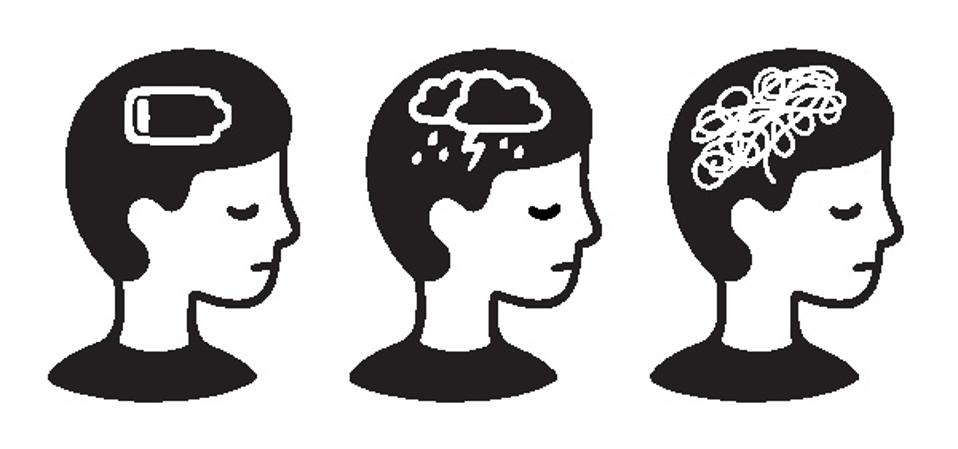According to the Organisation for Economic Co-operation and Development’s Child Well-being Dashboard, American children score at or above average among OECD member countries for educational outcomes in reading, math, and/or science but well below average for “high satisfaction with their life as a whole.” American indicators are stronger across the 20 measured indicators than many OECD member countries, but when partnered with other mental health indicators, this American data point stands out.
The American Psychological Association reports “20 million of our nation’s young people can currently be diagnosed with a mental health disorder.” And in 2020, the Annie E. Casey Foundation reported nearly 12% of American children and teens have been identified by a healthcare provider with anxiety or depression.
Additionally, the U.S. Centers for Disease Control and Prevention report increasing poor mental health in adolescents. The levels of “distress” in 2021 manifested as 42% of students feeling persistently sad or hopeless and 22% seriously considering suicide. Heartbreakingly, 10% of students attempted suicide. One in ten!
This U.S. Surgeon General advisory report shares additional startling statistics that should be read by all who live and work with children.
Most of us likely know The Who’s “The Kids Are Alright” (sorry for the earworm), but it is increasingly clear—the kids are not alright.
Mental Health Is “An Essential Part Of Children’s Overall Health”
The American Psychological Association affirms mental health is “an essential part of children’s overall health.” Meeting children’s social and emotional needs is widely recognized as crucial to their success in school and society. So much so that March 4-8, 2024, was recognized as National Social and Emotional Learning Week in a bipartisan effort by the U.S. Senate and White House.
Today, supporting student mental health through social and emotional learning is front and center in American K-12 schools.
Sometimes it can be difficult for people outside of education circles to make sense of terminology seen as “alphabet soup” but social and emotional learning, or SEL, is a phrase everyone should know.
While various definitions exist, SEL consists of widely recognizable skills and knowledge that matter for life success. Behaviors such as the ability to work with others to achieve a common goal, emotional self-regulation, and maintaining healthy relationships are elements of SEL goals.
SEL Builds Academic, Life, And Humanity Skills
The Collaborative for Academic, Social, and Emotional Learning is recognized for its evidence-based SEL strategies, research, and assessment in preK-12 schools. CASEL defines social and emotional learning as “an integral part of education and human development.” SEL strategies help people “develop healthy identities, manage emotions and achieve personal and collective goals, feel and show empathy for others, establish and maintain supportive relationships, and make responsible and caring decisions.”
An extensive 2023 meta-analysis of 424 studies led by Yale University found students who participate in school-based SEL interventions experienced significantly improved prosocial behaviors and academic achievement. The study also found significantly positive outcomes related to peer relationships, school climate, and safety.
The CDC’s Promoting Mental Health and Well-Being in Schools: An Action Guide for School and District Leaders offers school-based strategies to support student mental health, including mindfulness; connectedness; and social, emotional, and behavioral learning.
States Have Leaned Into The Benefits Of SEL
Many states have embraced these life skills for children and have leaned into CASEL’s evidence-based work. SEL standards are built into state law and educational practices and curricula. For example, in June 2023, the Oregon State Board of Education adopted a set of standards and a framework that affirm “Social and Emotional Learning (SEL) is at the center of how humans learn and thrive.”
Arkansas’ Division of Elementary and Secondary Education developed a G.U.I.D.E for Life curriculum to help students develop the soft skills necessary for academic success in school and to become well-rounded citizens. The five identified G.U.I.D.E principles (growth, understanding, interaction, decisions, and empathy) are paired with “I am” or “I can” statements that describe student progress toward and attainment of identified SEL skills.
Virginia offers similar “I can” statements through the five identified SEL core competencies of self-awareness, self-management, social awareness, relationship skills, and decision-making skills. In 11th and 12th grade, student expectations include “I can recognize, describe and distinguish inequity and injustice at different levels of society” and the ability to value diverse perspectives and collaborate in a group to work toward a common goal. Virginia’s third and fourth graders are learning to set and attain goals and “consider the feelings and rights of myself and others when making decisions.”
Ask any educator about the challenges they and their students are facing in schools in 2024 and you will hear about disengagement and chronic absenteeism, worrisome behavioral issues, and increased anxiety and mental health concerns. These issues disrupt children’s paths to academic and life success.
Leadership at the highest state and national levels has recognized the crucial role schools can play in helping children reach their fullest potential. If you would like to learn more about ways to support young people around you, Virginia’s Behavioral Health and Wellness webpages include a robust set of SEL resources and the CDC’s Division of Adolescent and School Health offers a variety of materials for schools and families.
The benefits of social and emotional skill development extend well beyond a child’s K-12 experience. They impact professional readiness and workforce development, as well. In CASEL’s Preparing Youth for the Workforce of Tomorrow report, surveyed employers revealed their desire for “an integrative education-to-work pipeline that deeply embeds SEL into classrooms” to promote “future-ready students.”
Many states and schools are stepping in, and stepping up, with SEL policies to make this happen.

